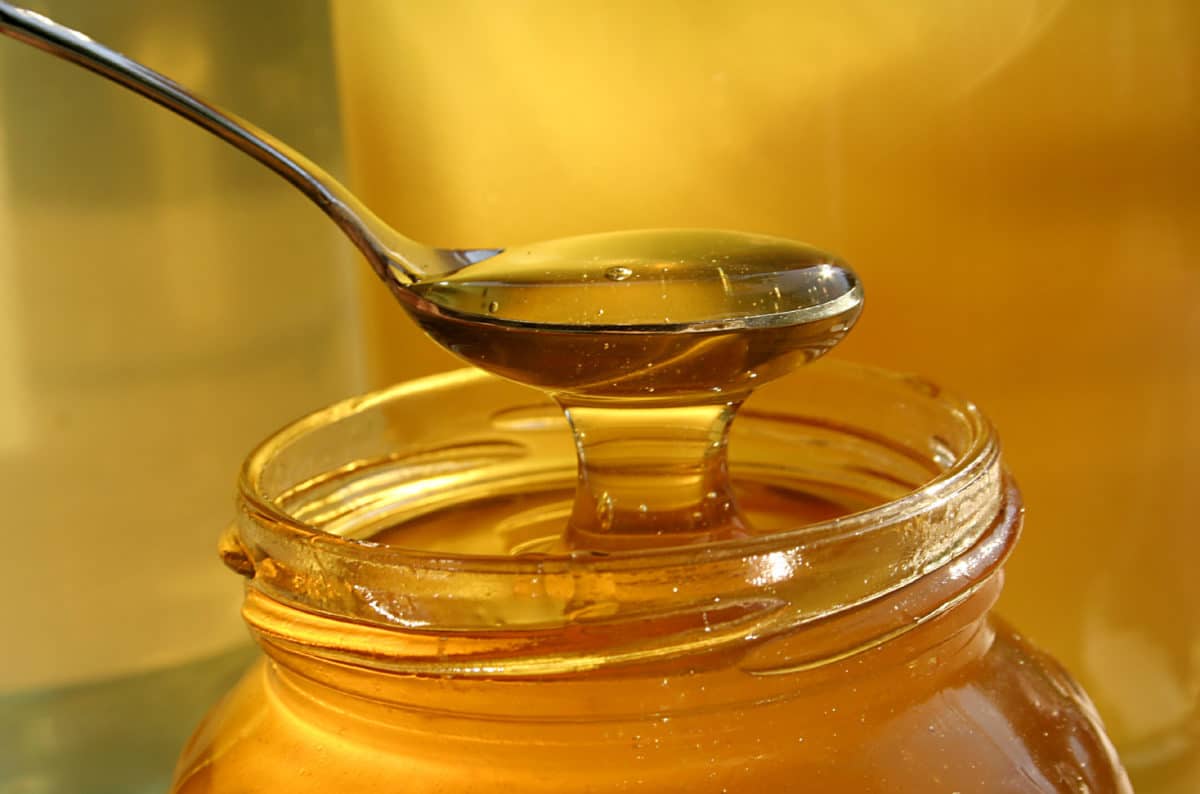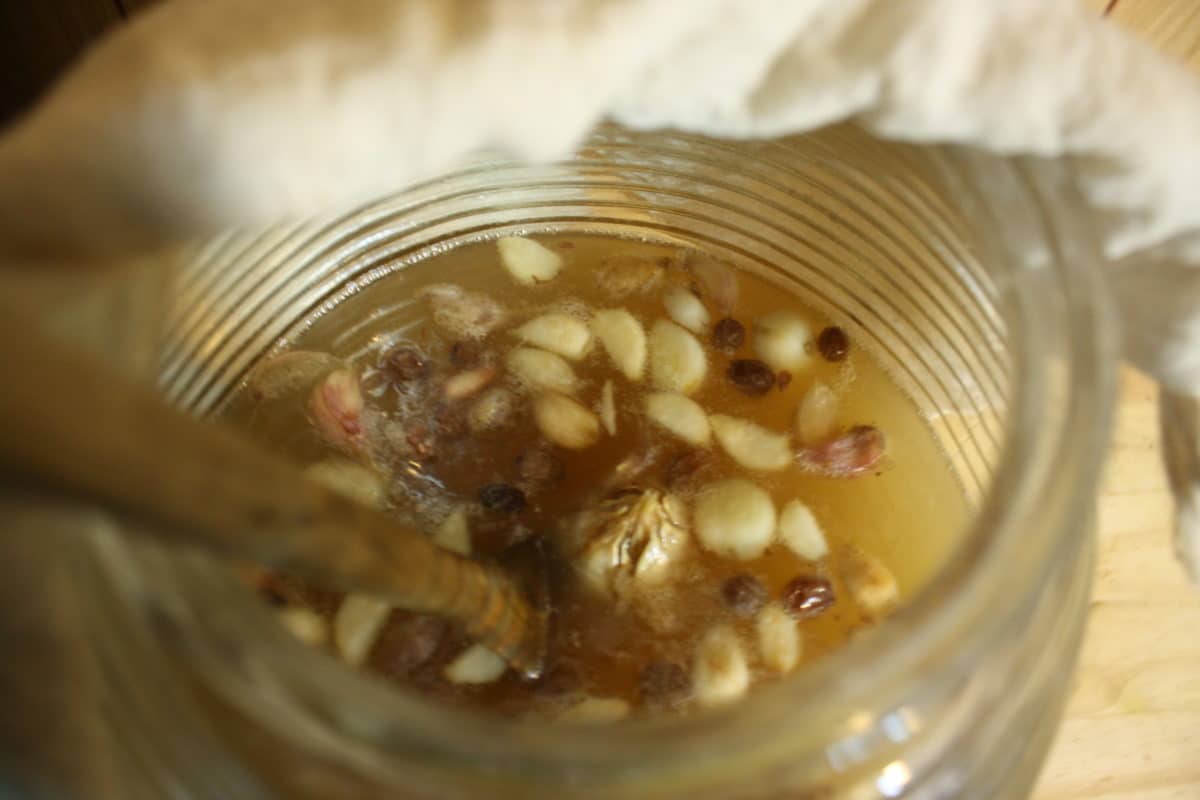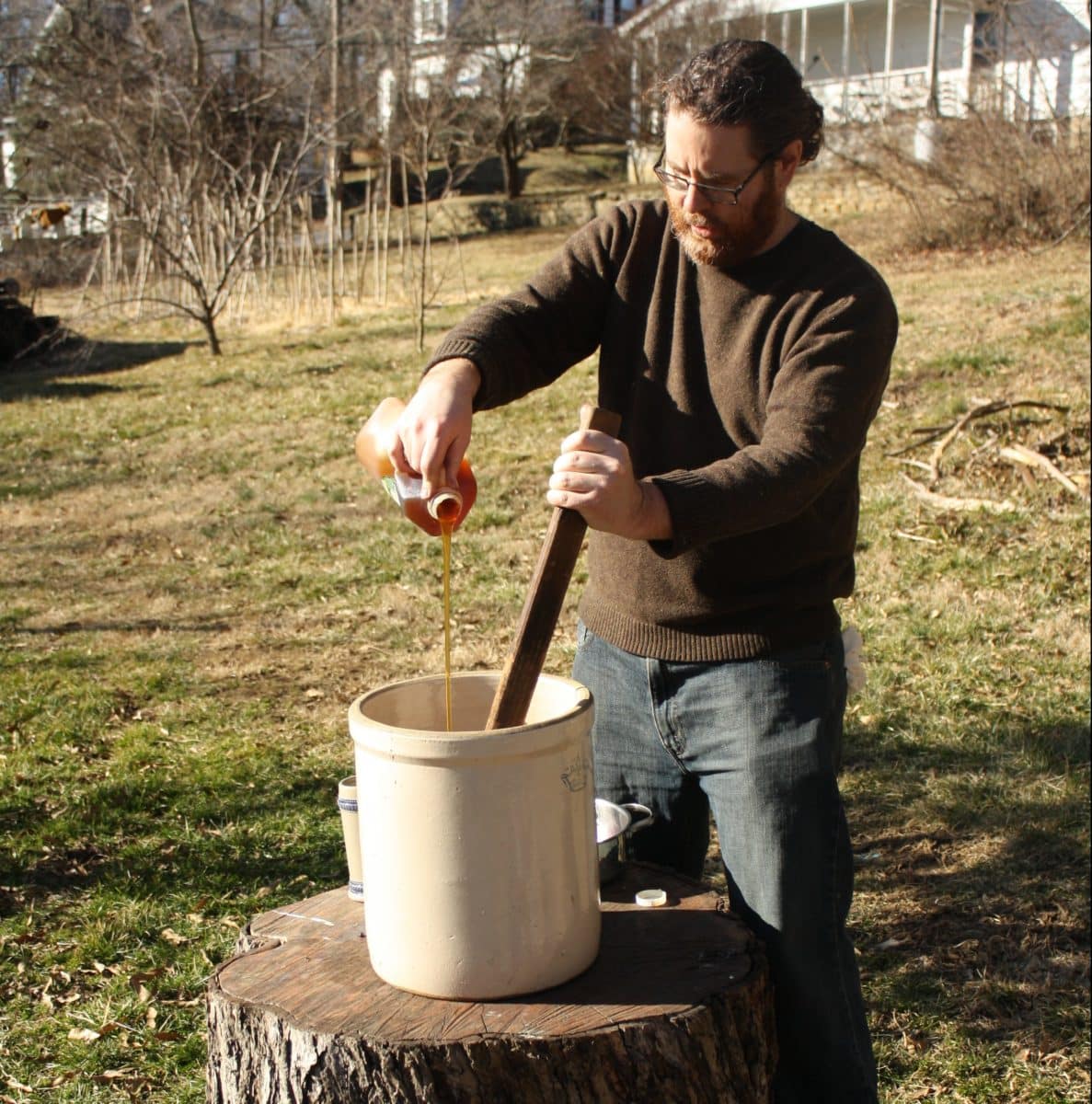Mead — quite possibly the world’s oldest fermented beverage — is at its core simply fermented honey and water. It can be much more than that…much, much more. The process for fermenting and aging mead is very simple, and can be done with only standard household equipment and ingredients from your garden or foraged from the wild. No complex procedures, chemical cleaners and sanitizers, or worry is required. Making mead can be a natural, stress-free, and enlivening process if approached with the right mindset.
Many cultures — from the Vikings, to Ethiopians, to indigenous South American tribes — have incorporated fermented honey beverages into their cultural traditions. Making alcohol requires little more than some fermentable sugars, a few other ingredients, and a bit of help. With honey being a naturally occurring sugar that has been harvested by man for as long as we’ve been around, it has long been the most used sugar for fermenting alcohol. If a fruit or vegetable with high sugar content is added, even better.
What is wild mead?
Mead, though, requires yeast to ferment. The aforementioned ancient cultures didn’t head to the local homebrew or grocery store to acquire it, so how did they get it? For one thing, yeast was little understood, and the effervescent and very-much-living process that it initiated (fermentation) was looked at as being brought on by gods and other spirit beings. Nonetheless, a great deal of care went into the process, meaning that we can easily emulate it today with or without the help of the gods.
For ancient peoples, yeast strains were first acquired from wild yeasts that floated through the air and thrived in abundance on fruits, flowers, and vegetables used as ingredients. When a particularly powerful and flavorful yeast strain (or more likely, combination of several strains) was found, it was saved by either using a portion of an actively fermenting batch to start the next batch, or by re-using the unwashed fermentation vessel, the interior of which would be caked with yeast strains leftover from previous batches. Another technique was to take a fresh log, usually juniper or birch, set it out to dry and develop cracks, and then drop it into the bottom of a new batch of mead. From then on, it would collect yeast in its cracks or in runes carved into its surface. Upon dropping it into future batches, it would cause a much more rapid fermentation than the initial harvesting of wild yeast did. The fermentation process was considered to be magical, and would often be accompanied by sacred rituals. Similar to the yeast log, stir sticks were used that would also gather yeast with each new batch. These sticks were referred to as magic sticks or totem sticks. Vessels, sticks, logs, and even active ferments were passed down through generations as family heirlooms.



Provided you use botanicals that have been unsprayed by pesticides, and that you don’t sanitize your brewing equipment with chemicals or rinse thoroughly when you do, you can harvest wild yeasts for your mead as the ancients did. Wild fermentation is a simple, intuitive process once you’ve done it a time or two. I’ll provide you with the basics for making a 1-gallon batch of semi-sweet mead. This is an ideal starting point, as you can adjust the ratios of honey-to-water by taste for future batches. (Less honey makes for a drier mead and more honey makes for a sweet or dessert mead). ![]()
First published December 2015


